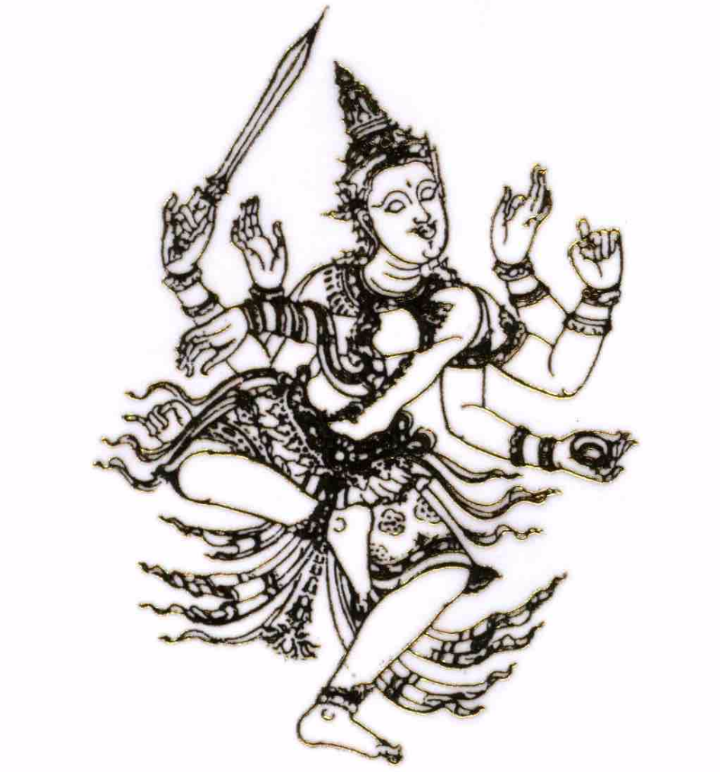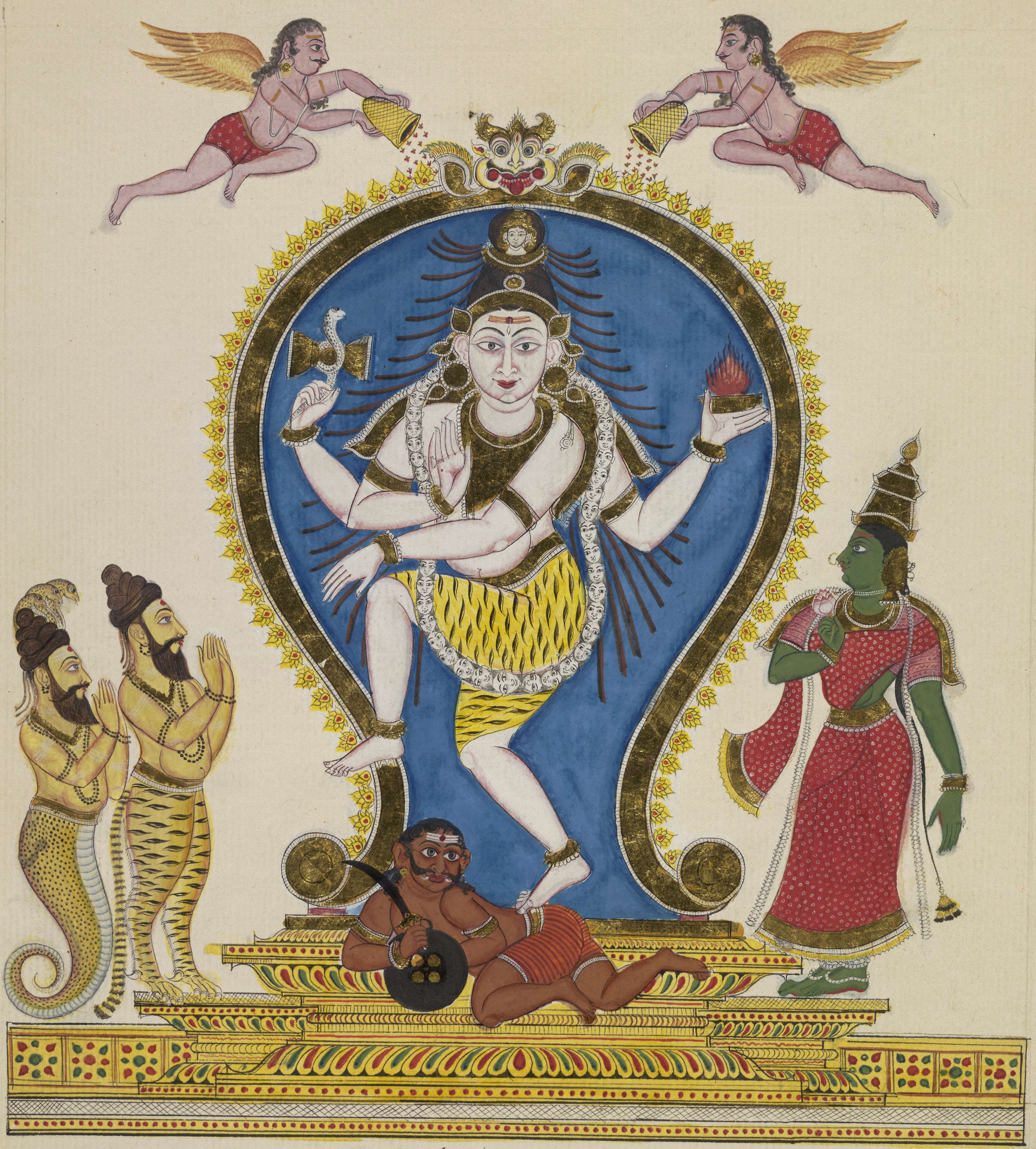|
Nāṭyaśāstra
The ''Nāṭya Shāstra'' (, ''Nāṭyaśāstra'') is a Sanskrit treatise on the performing arts. The text is attributed to sage Bharata, and its first complete compilation is dated to between 200 BCE and 200 CE, but estimates vary between 500 BCE and 500 CE. The text consists of 36 chapters with a cumulative total of 6,000 poetic verses describing performance arts. The subjects covered by the treatise include dramatic composition, structure of a play and the construction of a stage to host it, genres of acting, body movements, make up and costumes, role and goals of an art director, the musical scales, musical instruments and the integration of music with art performance. The ''Nāṭya Śāstra'' is notable as an ancient encyclopedic treatise on the arts, one which has influenced dance, music and literary traditions in India. It is also notable for its aesthetic "Rasa" theory, which asserts that entertainment is a desired effect of performance arts but not t ... [...More Info...] [...Related Items...] OR: [Wikipedia] [Google] [Baidu] |
Bharata (sage)
Bharata (Devanagari: भरत) was a '' muni'' (sage) of ancient India. He is traditionally attributed authorship of the influential performing arts treatise ''Natya Shastra'', which covers ancient Indian dance, poetics, dramaturgy, and music. Identity He is thought to have lived between 200 BCE and 200 CE, but estimates vary between 500 BCE and 500 CE. ''Nāṭya Śāstra'' Bharata is known only as being traditionally attributed authorship of the treatise ''Natya Shastra''. All other early Sanskrit treatises were similarly attributed to mythical sages. The text draws on his authority, as existing in the public imagination. The ''Nāṭya Śāstra'' is notable as an ancient encyclopedic treatise on the performing arts The performing arts are arts such as music, dance, and drama which are performed for an audience. They are different from the visual arts, which involve the use of paint, canvas or various materials to create physical or static art obje ... [...More Info...] [...Related Items...] OR: [Wikipedia] [Google] [Baidu] |
Sanskrit Prosody
Sanskrit prosody or Chandas refers to one of the six Vedangas, or limbs of Vedic studies.James Lochtefeld (2002), "Chandas" in The Illustrated Encyclopedia of Hinduism, Vol. 1: A-M, Rosen Publishing, , page 140 It is the study of poetic metres and verse in Sanskrit. This field of study was central to the composition of the Vedas, the scriptural canons of Hinduism; in fact, so central that some later Hindu and Buddhist texts refer to the Vedas as ''Chandas''. The Chandas, as developed by the Vedic schools, were organized around seven major metres, each with its own rhythm, movements and aesthetics. Sanskrit metres include those based on a fixed number of syllables per verse, and those based on fixed number of morae per verse. Extant ancient manuals on Chandas include Pingala's ''Chandah Sutra'', while an example of a medieval Sanskrit prosody manual is Kedara Bhatta's ''Vrittaratnakara''. The most exhaustive compilations of Sanskrit prosody describe over 600 metres. This i ... [...More Info...] [...Related Items...] OR: [Wikipedia] [Google] [Baidu] |
Abhinavagupta
Abhinavagupta (Devanāgarī अभिनवगुप्तः; c. 950 – 1016 CE) was a philosopher, mystic and aesthetician from Kashmir. He was also considered an influential musician, poet, dramatist, exegete, theologian, and logicianRe-accessing Abhinavagupta, Navjivan Rastogi, page 4 – a polymathic personality who exercised strong influences on Indian culture. Abhinavagupta was born in a Kānyakubja Brāhmin family of scholars and mystics whose ancestors immigrated from Kannauj on invitation by the great king of Kashmir, Lalitaditya Muktapida. He studied all the schools of philosophy and art of his time under the guidance of as many as fifteen (or more) teachers and gurus. In his long life he completed over 35 works, the largest and most famous of which is '' Tantrāloka'', an encyclopedic treatise on all the philosophical and practical aspects of Kaula and Trika (known today as Kashmir Shaivism). Another one of his very important contributions was in the field ... [...More Info...] [...Related Items...] OR: [Wikipedia] [Google] [Baidu] |
Nataraja
Nataraja (/ n̪əʈəɾɑd͡ʒᵊ/ ,, ; , ''Naṭarājar'' Telugu: నటరాజు,''Naṭarāju''), also known as Adalvallan (), is a depiction of Shiva, one of the main deities in Hinduism, as the divine cosmic dancer. His dance is called the tandava.''Encyclopædia Britannica'' (2015) The pose and artwork are described in many Hindu texts such as the ''Tevaram'' and '' Thiruvasagam'' in Tamil and the ''Amshumadagama'' and ''Uttarakamika agama'' in Sanskrit and the Grantha texts. The dance ''murti'' is featured in all major Hindu temples of Shaivism, and is a well-known sculptural symbol in India and popularly used as a symbol of Indian culture, as one of the finest illustrations of Hindu art. This form is also referred to as Kuththan (), Sabesan (), and Ambalavanan () in various Tamil texts. The sculpture is symbolic of Shiva as the lord of dance and dramatic arts, with its style and proportions made according to Hindu texts on arts. Tamil devotional texts such as ... [...More Info...] [...Related Items...] OR: [Wikipedia] [Google] [Baidu] |
Kalpa (Vedanga)
Kalpa () means "proper, fit" and is one of the six disciplines of the Vedānga, or ancillary science connected with the Vedas – the scriptures of Hinduism. This field of study is focused on the procedures and ceremonies associated with Vedic ritual practice.James Lochtefeld (2002), "Kalpa" in The Illustrated Encyclopedia of Hinduism, Vol. 1: A–M, Rosen Publishing, , p. 339. The major texts of Kalpa Vedanga are called ''Kalpa Sutras'' in Hinduism. The scope of these texts includes Vedic rituals, rites of passage rituals associated with major life events such as birth, wedding and death in family, as well as personal conduct and proper duties in the life of an individual. Most Kalpasutras texts have experienced interpolation, changes and consequent corruption over their history, and Apasthamba Kalpasutra ancillary to the Yajurveda may be the best preserved text in this genre. Kalpa Sutras are also found in other Indian traditions, such as Jainism. Etymology Kalpa is a Sanskri ... [...More Info...] [...Related Items...] OR: [Wikipedia] [Google] [Baidu] |
Sutra
''Sutra'' ()Monier Williams, ''Sanskrit English Dictionary'', Oxford University Press, Entry fo''sutra'' page 1241 in Indian literary traditions refers to an aphorism or a collection of aphorisms in the form of a manual or, more broadly, a condensed manual or text. Sutras are a genre of ancient and medieval Indian texts found in Hinduism, Buddhism and Jainism. In Hinduism, sutras are a distinct type of literary composition, a compilation of short aphoristic statements.Gavin Flood (1996), ''An Introduction to Hinduism'', Cambridge University Press, , pages 54–55 Each sutra is any short rule, like a theorem distilled into few words or syllables, around which teachings of ritual, philosophy, grammar, or any field of knowledge can be woven. The oldest sutras of Hinduism are found in the Brahmana and Aranyaka layers of the Vedas. Every school of Hindu philosophy, Vedic guides for rites of passage, various fields of arts, law, and social ethics developed respective sutras, ... [...More Info...] [...Related Items...] OR: [Wikipedia] [Google] [Baidu] |
IAST
The International Alphabet of Sanskrit Transliteration (IAST) is a transliteration scheme that allows the lossless romanisation of Brahmic family, Indic scripts as employed by Sanskrit and related Indic languages. It is based on a scheme that emerged during the 19th century from suggestions by Sir Charles Trevelyan, 1st Baronet, Charles Trevelyan, William Jones (philologist), William Jones, Monier Monier-Williams and other scholars, and formalised by the Transliteration Committee of the Geneva International Congress of Orientalists, Oriental Congress, in September 1894. IAST makes it possible for the reader to read the Indic text unambiguously, exactly as if it were in the original Indic script. It is this faithfulness to the original scripts that accounts for its continuing popularity amongst scholars. Usage Scholars commonly use IAST in publications that cite textual material in Sanskrit, Pāḷi and other classical Indian languages. IAST is also used for major e-text repos ... [...More Info...] [...Related Items...] OR: [Wikipedia] [Google] [Baidu] |
Tamil Classics
The Sangam literature (Tamil: சங்க இலக்கியம், ''caṅka ilakkiyam''), historically known as 'the poetry of the noble ones' (Tamil: சான்றோர் செய்யுள், ''Cāṉṟōr ceyyuḷ''), connotes the early classical Tamil literature and is the earliest known literature of South India. The Tamil tradition links it to legendary literary gatherings around Madurai in the ancient Pandya kingdom. It is generally accepted by most scholars that the historical Sangam literature era, also known as the Sangam period, spanned from 100 BCE to 250 CE, on the basis of linguistic, epigraphic, archaeological, numismatic and historical data; though some scholars give a broader range of 300 BCE to 300 CE. The Eighteen Greater Texts (Patiṉeṇmēlkaṇakku), along with the Tamil grammar work Tolkappiyam, are collectively considered as Sangam literature. These texts are classified into the Ettuttokai (Eight Anthologies) and Pattupattu (Ten Idyll ... [...More Info...] [...Related Items...] OR: [Wikipedia] [Google] [Baidu] |
Brahmana
The Brahmanas (; Sanskrit: , International Alphabet of Sanskrit Transliteration, IAST: ''Brāhmaṇam'') are Vedas, Vedic śruti works attached to the Samhitas (hymns and mantras) of the Rigveda, Rig, Samaveda, Sama, Yajurveda, Yajur, and Atharvaveda, Atharva Vedas. They are a secondary layer or classification of Sanskrit texts embedded within each Veda, which explain and instruct on the performance of Yajna, Vedic rituals (in which the related Samhitas are recited). In addition to explaining the symbolism and meaning of the Samhitas, Brahmana literature also expounds scientific knowledge of the Vedic period, Vedic Period, including observational astronomy and, particularly in relation to altar construction, geometry. Divergent in nature, some Brahmanas also contain mystical and philosophical material that constitutes Aranyakas and Upanishads. Each Veda has one or more of its own Brahmanas, and each Brahmana is generally associated with a particular Shakha or Vedic school. Less ... [...More Info...] [...Related Items...] OR: [Wikipedia] [Google] [Baidu] |
Shatapatha Brahmana
The Shatapatha Brahmana (, , abbreviated to 'SB') is a commentary on the Yajurveda, Śukla Yajurveda. It is attributed to the Vedic sage Yajnavalkya. Described as the most complete, systematic, and important of the Brahmanas (commentaries on the Vedas), it contains detailed explanations of Historical Vedic religion, Vedic Yajna, sacrificial rituals, symbolism, and mythology. Particularly in its description of sacrificial rituals (including construction of complex fire-altars). The Shatapatha Brahmana is also considered significant in the development of Vaishnavism as the origin of several Puranas, Puranic legends and avatars of Vishnu. Notably, all of them (Matsya, Kurma, Varaha, Narasimha, and Vamana) are listed as the first five avatars in the Dashavatara (the ten principal avatars of Vishnu). There are two versions (recensions) available of this text. They are the Madhyandina Shakha, Madhyandina recension and the Kanva Shakha, Kanva recension. This article focuses exclusively ... [...More Info...] [...Related Items...] OR: [Wikipedia] [Google] [Baidu] |
Vedanga
The Vedanga ( ', "limb of the Veda-s"; plural form: वेदाङ्गानि ') are six auxiliary disciplines of Vedic studies that developed in Vedic and post-Vedic times.James Lochtefeld (2002), "Vedanga" in The Illustrated Encyclopedia of Hinduism, Vol. 1: A-M, Rosen Publishing, , pages 744-745 List of the Vedanga #Shiksha (Sanskrit: शिक्षा ', "instruction, teaching"): phonetics, phonology, pronunciation. This auxiliary discipline has focused on the letters of the Sanskrit alphabet, accent, quantity, stress, melody and rules of euphonic combination of words during a Vedic recitation. # Chanda (Sanskrit: छन्द ', "metre"): prosody.James Lochtefeld (2002), "Chandas" in The Illustrated Encyclopedia of Hinduism, Vol. 1: A-M, Rosen Publishing, , page 140 This auxiliary discipline has focused on the poetic meters, including those based on fixed number of syllables per verse, and those based on fixed number of morae per verse. # Vyakarana (Sanskrit: व्� ... [...More Info...] [...Related Items...] OR: [Wikipedia] [Google] [Baidu] |





